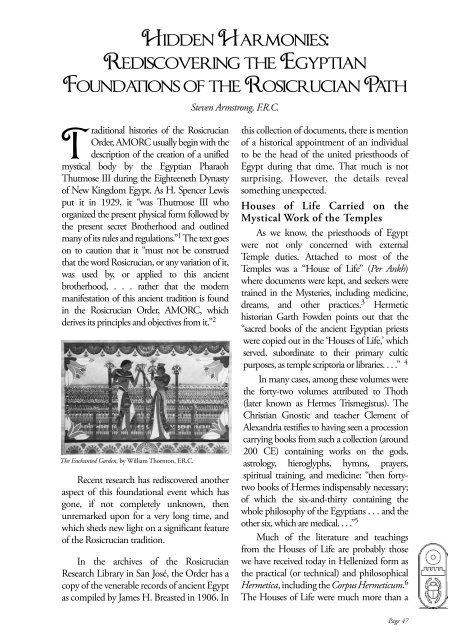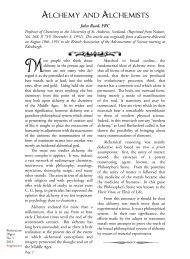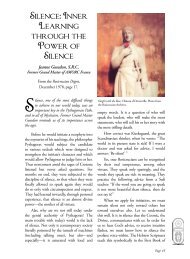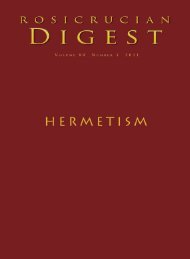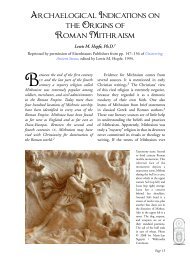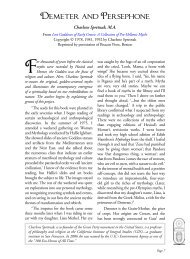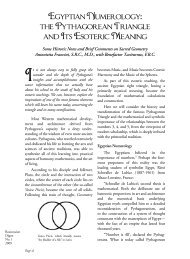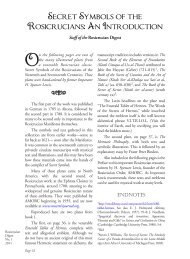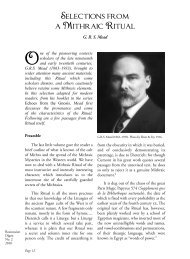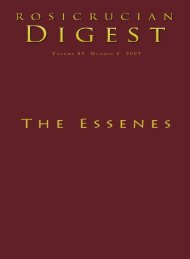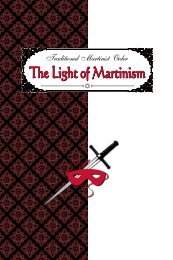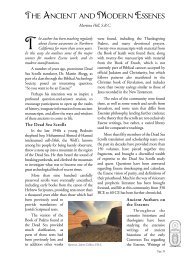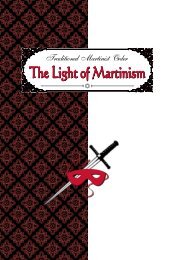Digest - Rosicrucian Order
Digest - Rosicrucian Order
Digest - Rosicrucian Order
You also want an ePaper? Increase the reach of your titles
YUMPU automatically turns print PDFs into web optimized ePapers that Google loves.
Steven Armstrong, F.R.C.<br />
Traditional histories of the <strong>Rosicrucian</strong><br />
<strong>Order</strong>, AMORC usually begin with the<br />
description of the creation of a unified<br />
mystical body by the Egyptian Pharaoh<br />
Thutmose III during the Eighteeneth Dynasty<br />
of New Kingdom Egypt. As H. Spencer Lewis<br />
put it in 1929, it “was Thutmose III who<br />
organized the present physical form followed by<br />
the present secret Brotherhood and outlined<br />
many of its rules and regulations.” 1 The text goes<br />
on to caution that it “must not be construed<br />
that the word <strong>Rosicrucian</strong>, or any variation of it,<br />
was used by, or applied to this ancient<br />
brotherhood, . . . rather that the modern<br />
manifestation of this ancient tradition is found<br />
in the <strong>Rosicrucian</strong> <strong>Order</strong>, AMORC, which<br />
derives its principles and objectives from it.” 2<br />
The Enchanted Garden, by William Thornton, F.R.C.<br />
Recent research has rediscovered another<br />
aspect of this foundational event which has<br />
gone, if not completely unknown, then<br />
unremarked upon for a very long time, and<br />
which sheds new light on a significant feature<br />
of the <strong>Rosicrucian</strong> tradition.<br />
In the archives of the <strong>Rosicrucian</strong><br />
Research Library in San José, the <strong>Order</strong> has a<br />
copy of the venerable records of ancient Egypt<br />
as compiled by James H. Breasted in 1906. In<br />
this collection of documents, there is mention<br />
of a historical appointment of an individual<br />
to be the head of the united priesthoods of<br />
Egypt during that time. That much is not<br />
surprising. However, the details reveal<br />
something unexpected.<br />
Houses of Life Carried on the<br />
Mystical Work of the Temples<br />
As we know, the priesthoods of Egypt<br />
were not only concerned with external<br />
Temple duties. Attached to most of the<br />
Temples was a “House of Life” (Per Ankh)<br />
where documents were kept, and seekers were<br />
trained in the Mysteries, including medicine,<br />
dreams, and other practices. 3 Hermetic<br />
historian Garth Fowden points out that the<br />
“sacred books of the ancient Egyptian priests<br />
were copied out in the ‘Houses of Life,’ which<br />
served, subordinate to their primary cultic<br />
purposes, as temple scriptoria or libraries. . . .” 4<br />
In many cases, among these volumes were<br />
the forty-two volumes attributed to Thoth<br />
(later known as Hermes Trismegistus). The<br />
Christian Gnostic and teacher Clement of<br />
Alexandria testifies to having seen a procession<br />
carrying books from such a collection (around<br />
200 CE) containing works on the gods,<br />
astrology, hieroglyphs, hymns, prayers,<br />
spiritual training, and medicine: “then fortytwo<br />
books of Hermes indispensably necessary;<br />
of which the six-and-thirty containing the<br />
whole philosophy of the Egyptians . . . and the<br />
other six, which are medical. . . .” 5<br />
Much of the literature and teachings<br />
from the Houses of Life are probably those<br />
we have received today in Hellenized form as<br />
the practical (or technical) and philosophical<br />
Hermetica, including the Corpus Hermeticum. 6<br />
The Houses of Life were much more than a<br />
Page 47


